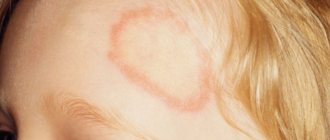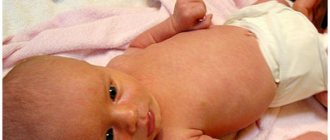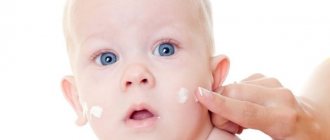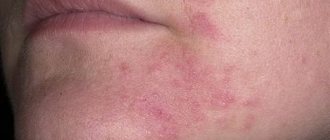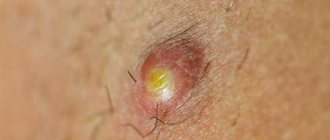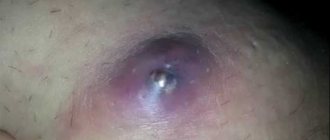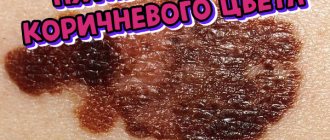Antibiotics are pharmacological drugs that have a detrimental effect on bacteria. They change the membrane of the microorganism or create unfavorable conditions in the habitat, which leads to the death of the microbe. Not all antibacterial agents can cure furunculosis. Each inflammatory process has its own appropriate drug. Antibiotics for furunculosis are prescribed those that affect the cause of suppuration, the infection. Most often the cause of purulent processes on the skin is staphylococcus. Therefore, when treating boils, the spectrum of action of the drug should include gram-positive cocci, which include staphylococcus.
What you need to know about the treatment of furunculosis
Remedies for boils must combat the cause of this disease. Considering that a boil occurs due to an infectious pathogen, the main medicine is antibacterial drugs.
With furunculosis, an antibiotic will definitely help, which specifically acts on staphylococcus and other gram-positive pathogenic flora. Such antibacterial drugs include penicillin groups, macrolides, cephalosporins and others.
With complicated boils, the process of suppuration can be caused by several types of bacteria at once. In this case, prescribing an antibiotic may not provide rapid positive dynamics. It is advisable to inoculate the discharged boil with the determination of antibacterial drugs that have a detrimental effect on the grown pathogenic flora. The advantage of this method is that you can select an antibiotic that affects all pathological bacteria living in a given abscess. The disadvantage of the method is the long wait for results, it will take about 5-7 days.
The age of the patient influences which antibiotics to take for boils. The immune system of an adult patient is accustomed to coping with many infections; antibodies to a wide range of pathogenic pathogens have accumulated in the blood, so treatment most often begins with topical antibacterial agents. The child’s body is less accustomed to coping with bacteria, and the specialist is more likely to prescribe oral antibiotics of a broad spectrum.
When choosing methods to combat furunculosis, the localization of the process is of great importance. The closer the ulcers are to the brain, the more potent the doctor will prescribe. For example, the localization of extensive boils on the face, scalp, neck, ears, nose requires careful observation by specialists and the prescription of loading doses of antibiotics. With advanced processes, tissue necrosis may develop, which will lead to sepsis. Infected blood and lymph will quickly carry the infection to the brain, causing meningitis. With this complication, the prognosis for the patient is not always favorable; there is a possibility of death.
Diagnosis of furunculosis
The diagnosis is usually made based on the results of an external examination of the patient and does not cause much difficulty for the doctor. Additional diagnostic methods may be required only in cases where multiple furunculosis is observed, which is difficult to treat.
In this case, bacterial culture of the contents of the boil, immunodiagnostics, and a blood test (detailed) are indicated. If these studies do not produce results, then a full examination of the body is carried out, since in this case the cause of frequent furunculosis may be concomitant diseases (blood diseases, diabetes and a number of others).
Indications for the use of antibiotics for boils
With an isolated, uncomplicated single boil, the use of antibiotics is not considered mandatory. Antibiotic therapy is prescribed:
- with boils located in the facial area (with or without complications);
- with boils, where complications include inflammation of the lymph nodes and blood vessels;
- with abscess boils;
- with furunculosis (multiple appearance of boils).
The indication for the use of antibiotics is chronic furunculosis, isolated recurrent boils. Treatment with antibiotics can be supplemented with vitamin therapy, immunostimulating therapy, as well as specific treatment when predisposing causes of the disease are detected. Diet, physiotherapy, and cosmetic procedures are often recommended.
How quickly does the result come?
The rate at which a positive result occurs from the use of antibiotics depends on several factors:
- A person without immunodeficiency conditions is cured and recovers faster from furunculosis.
- Diabetes mellitus, metabolic and microcirculatory disorders lead to deterioration of metabolism within skin tissues and poor trophism. Both points negatively affect the speed of breakthrough and regeneration of the furuncle.
- If a person simultaneously suffers from ARVI, a bacterial infection, the recovery period increases due to suppressed immunity. The body's defenses weaken and the person gets sick.
- In mild cases, convalescence occurs within a week. Severe cases last for months.
For furunculosis, antibiotics are an integral method of therapy.
How to treat boils with external medications
Antibiotics are selected for the treatment of boils depending on the location and severity of the purulent-necrotic process. For small single lesions on the body, the doctor may choose topical antimicrobial drugs and recommend concomitant restorative therapy.
External antibiotics for treating the affected skin area include ointments, gels, creams, suspensions, and mash.
These drugs differ not always in the active substance, but also in consistency and percentage of fat content. Some dosage forms penetrate quickly into the layers of the skin and dry out. Others, on the contrary, moisturize the surface of the body for a long time, saturating the epidermis with anti-inflammatory and antimicrobial components.
- For small boils on the face, antibiotics are recommended, which are gentle on delicate skin. You can use Levomekol gel, which is based on the antibiotic chloramphenicol. The composition contains methyluracil, which helps accelerate skin regeneration. The gel base allows for quick absorption and does not leave any spots or shine on the face.
- Zenerit cream has a light consistency and is used for minor ulcers and pimples on the face. Zinerit contains the antibiotic erythromycin, which affects many bacteria, including staphylococcus.
- For deep purulent lesions on the body, ointment-based antibiotics are used. For example, Tetracycline ointment. It contains a broad-spectrum antibiotic – tetracycline. The ointment consistency allows you to preserve the active substance on the surface and in the layers of the skin for a long time. For convenience, applications are used, that is, you need to squeeze the ointment onto a napkin, distribute it on the boil and fix it for 2-4 hours.
- The best remedy for skin abscesses and boils is Ichthyol ointment. Its active ingredient is ichthyol, which is obtained by distilling natural minerals and resins. As a powerful antiseptic, Ichthyol ointment helps fight many viruses, bacteria on the skin and in the wound, ensuring a reduction in the inflammatory response and healing. There are known cases in practical medicine when, when using Ichthyol ointment, purulent wounds with an area of 2-4 cm healed.
- If furunculosis appears on the butt, antibiotics must be absorbed as quickly as possible, otherwise the skin will become wet, which will provoke increased inflammation. Antibacterial gel and non-greasy ointments work quickly on the thigh or buttock. In this localization, it is recommended to rub in Gentamicin ointment or Gentaxan; they contain the antimicrobial gentamicin. Such ointments and gels have a pronounced antimicrobial treatment, reduce the work of the sebaceous glands, and dry the skin around the abscess.
- To treat boils in the groin, antibiotics and antiseptics are used, such as Ichthyol ointment, Vishnevsky liniment, Levomekol, Tetracycline ointment. All of them have a pronounced antimicrobial effect and quickly destroy the cause of inflammation. In this localization, the healing process can be lengthy due to poor hygiene, so it is important to systematically maintain the cleanliness of the skin in the genital and groin area.
- When choosing which antibiotics to treat a boil under the arm, the doctor is guided by the characteristics of this location. There are many sweat and sebaceous glands in the armpit area, so the active ingredients must penetrate as deeply as possible into the tissue. To treat furunculosis in the armpits, ointment-based preparations containing antibiotics are used: streptomycin, chloramphenicol, syntomycin. The prescription of Ichthyol ointment and Vishnevsky's balsamic liniment is justified.
Causes of boils and symptoms
A furuncle forms at the site of inflammation of the hair follicles. The cause of the development of the inflammatory process is the proliferation of pathogenic microorganisms that have entered the layers of the epidermis and are localized in the hair follicle. If several hair follicles become inflamed at the same time, a carbuncle will develop.
The causative agent of the purulent-necrotic process on the body in most cases is pathogenic staphylococcus. This microorganism is often present on the body, on the skin of the hands. It appears on the surface of the skin upon contact with contaminated objects. Sources of infection can be paper banknotes, door handles of a public toilet, stair railings in the entrance, etc.
The entry point for infection is the damaged integrity of the skin. You can become infected with a large number of bacteria when:
- abrasions on the skin;
- presence of a burn surface on the body;
- microcracks;
- wounds and abrasions.
After pathogenic microorganisms have penetrated the layers of the dermis and entered the hair follicle, the inflammatory-necrotic process begins.
Staphylococcus aureus, like other representatives of gram-positive cocci, is very stable in the external environment. Colonies of these microorganisms can live on the surface of contaminated objects for several months.
Stages of boil development:
- Inflammation. Redness and thickening of the skin around the infected bulb.
- Suppuration. The formation in the center of the purulent area is white-yellow in color.
- Tissue necrosis. If treated incorrectly, bacteria spread, causing inflammation. A long-term pathological process leads to the death of the epidermis and other layers of the skin.
- Independent breakthrough or surgical removal of the abscess.
- Healing. Symptoms of improvement: reduction of redness, regeneration of affected tissues.
Medicines for boils are selected individually, depending on the area, depth of the lesion, the special properties of the body and the presence of other diseases. When the first symptoms of chiria appear, it is better to consult a doctor for treatment, who will correctly select antibiotics and related medications.
Local antibiotics for boils and boils
Patients rarely consult a doctor from the very beginning of the inflammatory process - they are forced to seek help from official medicine by the general deterioration of their condition. In this case, surgical treatment cannot be avoided. After opening the lesion, the contents are removed and a bandage with antibacterial ointment is applied.
At this stage, broad-spectrum ointments are prescribed.
- "Levomikol". It contains the antibiotic chloramphenicol and the immune system stimulant methyluracil. The inflammatory process is stopped, the wound is cleaned.
- Another ointment is Mupirocin. Bactroban has a similar effect. These agents have a broad spectrum of action; in case of bacterial infection, the inflammatory process of soft tissues stops after 2-3 applications.
- Ointment "Lincomycin". Has a wide spectrum of action.
If patients come in on time - before severe swelling appears and body temperature rises - what ointments are prescribed in this case?
At the beginning of inflammation, local agents are used that have astringent and antiseptic properties - ichthyol, tar, Vishnevsky's liniment-balm.
The antibiotic is part of synthomycin ointment, which has a cleansing, anti-inflammatory and healing effect - dressings with it can be applied both during suppuration and at the stage of wound healing.
To speed up the regeneration of the body, healing ointments are used: zinc, “Rescuer” and the like.
Use of antibiotics for boils during pregnancy
The body of pregnant women undergoes many changes associated with high levels of hormones and a slight decrease in immunity. Therefore, the main emphasis in the treatment of boils during pregnancy should be on strengthening the immune defense. The use of systemic antibiotics for boils during pregnancy is not recommended.
In order to prevent the negative impact of antibiotics on the fetus, experts advise carrying out general strengthening treatment, adhering to a balanced diet, and consuming sufficient amounts of vitamins. In addition, it is important to observe the rules of personal hygiene and avoid hypothermia.
To get rid of boils, a pregnant woman can use traditional medicine recipes that do not pose a danger to the baby. It is allowed to use local antibacterial drugs: for example, Vishnevsky ointment, Levomikol, ointments with antibiotics.
When the first symptoms of furunculosis appear, a pregnant woman should definitely consult a doctor. It is unacceptable to independently use antibiotics and other drugs that can harm the unborn child.
Why you need to see a doctor to prescribe treatment
Boil is a benign neoplasm. But the consequences of self-medication can be sad. Only a doctor can prescribe the correct medicine for furunculosis.
Reasons to contact a specialist:
- will carry out comprehensive diagnostics;
- determine factors contributing to the development of boils;
- will conduct additional research and arrange consultations with related specialists;
- prescribe effective medications;
- the surgeon will dissect the boil, clean the hair follicle, and talk about wound care methods and hygiene methods during the rehabilitation period;
Self-medication can cause the infection to grow, and there is a high risk of complications.
What antibiotic tablets are prescribed?
For a boil that affects a large area, in the presence of several foci of a purulent-necrotic process, the doctor prescribes broad-spectrum antibiotics in tablets or injections.
In modern pharmacology, several hundred types of antibacterial drugs are produced. To understand this variety of antibiotics, you need to understand that many different drugs have the same active ingredient, that is, they are analogues.
Side effects of antibiotics for boils
- Allergic manifestations (urticaria, edema, lung damage).
- Toxic liver damage (especially when taking tetracyclines or erythromycin).
- Negative effect on the hematopoietic system (especially when taking chloramphenicol or streptomycin).
- Damage to the digestive tract.
- General toxic effects (damage to hearing, vision, vestibular apparatus, kidneys).
- Imbalance of microflora in the body (in the intestines, genitals, skin, etc.).
Side effects of antibiotics for boils are due to the fact that these drugs, in addition to pathogenic microorganisms, also destroy beneficial microflora living in the human body. After antibiotic therapy, the body begins to be actively populated by new bacteria, which are not always beneficial. As a result, the immune system becomes upset and unwanted side effects develop.
In what cases is it necessary to take antibiotics for furunculosis?
Treatment of furunculosis with antibiotics provides a quick recovery when the boil is on the cervical area or on the head. This placement of the abscess is dangerous because it leads to infection entering the brain. An abscess provokes complications, including death. Spreading quickly, Staphylococcus aureus provokes the appearance of new foci of inflammation. Most often, boils are found on the face, back, neck area, ears, and intimate places.
Furunculosis requires treatment:
- when enlargement occurs, enlargement of lymph nodes;
- painful lesions spread over areas of the body;
- when furunculosis develops into a chronic stage;
- when placing abscesses on the cervical, head, and facial areas.
Additional drugs used in treatment include drugs to enhance immunity and vitamins. It is important to adhere to the diet prescribed by your doctor.
It is forbidden to treat inflammation at home on your own. Infection can lead to carbuncles.
Penicillin antibiotics
For skin infections caused by pathogenic staphylococcus, antibacterial agents based on penicillin are prescribed. These drugs are divided into oxacillins, ampicillins, amoxicillins and others.
These drugs have an extended spectrum of action and are active against Staphylococcus aureus, Shigella, Salmonella, etc. Penodil is prescribed to drink for boils, 250 mg 4 times a day at intervals of 6 hours; the half-life of this antibiotic is less than 12 hours.
From a number of semisynthetic penicillins, related to oxacillins, antibiotics are prescribed for boils:
The powerful effect of Ampiox is due to the fact that it contains two antibiotics: ampicillin and oxacillin, so it has a detrimental effect on most known pathogenic bacteria. For adults with furunculosis, this antibiotic is prescribed in tablets of 2-4 mg per day. The course of treatment depends on the severity of the disease and can be extended up to 10 days.
Macrolides
A broad group of antibacterial agents that interfere with protein production in bacterial ribosomes are called macrolides. When figuring out what pills to take for furunculosis, many doctors prefer drugs from a number of macrolides, as they have an antibacterial effect, partially restore the body’s immune properties, and have an anti-inflammatory effect. Incorrectly selected medications lead to increased suppuration and decreased immunity. Cheap antibiotic therapy may not cope with its task of eliminating the causes of inflammation, but will cause a greater burden on the liver and kidneys. Therefore, a specialist should be involved in the treatment of boils and the selection of antibiotics.
Natural macrolides include Erythromycin, Spiramycin, and semisynthetic macrolides include Klacid, Fromilid, Sumamed.
Klacid is prescribed in the form of tablets and powder for diluting a suspension. For adults, the dosage is 0.5 g twice daily every 12 hours. In children, the daily dose is 15 mg per kilogram of weight, divided into two doses - morning and evening.
In addition to antibiotics, preparations based on brewer's yeast are used to treat acne and boils. Yeast tablets improve metabolic processes in the skin and help in the production of certain vitamins, so they are prescribed to be taken in long courses for furunculosis.
The feasibility of antibiotic therapy
Staphylococcus aureus is a bacterium, and microorganisms of this group are sensitive to antibiotics. Every person has a threshold of resistance to pathogenic microflora, but it is not always possible to cope with the infection using the immune system.
Antibiotics are potent and toxic drugs with side effects. They kill pathogenic and beneficial microflora, which is harmful to health. Therefore, the use of these medications is permitted only as prescribed by a doctor. Before issuing a prescription, the specialist assesses the patient’s condition, possible risks from the use of antibiotics and a ban on their use.
Indications for the use of antibacterial drugs:
- Body temperature above 38.5, headache, weakness and feeling of weakness. These signs indicate intoxication caused by pathogenic microflora. If measures are not taken, there is a high risk of developing sepsis (blood poisoning) with a fatal outcome. You can’t take risks, it’s important to trust the doctors.
- More than one boil on the body. Multiple purulent rashes are a sign of infection penetration into the subcutaneous tissue and lymph nodes. This is very dangerous if boils are located on the face and neck. From these areas, the infection can reach the meninges and lead to the development of purulent meningitis.
- Immunodeficiency. Occurs due to HIV, chronic diseases, taking immunosuppressants and after surgery. Antibiotics for boils are prescribed to all patients with immunodeficiency. The reason is the high rate of infection development. With reduced immunity, the transition to severe stages takes 12-36 hours.
- Relapsing course of the disease. When boils come back again and again, doctors suspect internal infection rather than infection entering the hair follicle through the skin. It is impossible to cope with pathogenic microflora that have settled in the body without antibiotics, and treatment will not be quick.
For uncomplicated disease, antibacterial drugs without a prescription are not needed. Some patients do not go to the doctor, waiting until the boil opens and washing the resulting wound with antiseptics. This approach is justified if there is no fever, severe pain, weakness and repeated suppuration after the boil has come out.
Effect of the drug on boils
Antibiotics for the development of boils are aimed at combating the pathogen:
- relieve redness;
- eliminate Staphylococcus aureus;
- restore soft tissues and skin.
In order for the capsules to work correctly, you will need to choose the right drug. The clinic carries out the following analyzes of the patient’s biological material:
- urine;
- blood;
- blood biochemistry.
Skin scraping helps to accurately identify the pathogen. Bacteriological culture analysis determines the reaction of pathogenic microorganisms to the antibiotic. Based on the test results, the doctor selects an effective form of the drug. The pharmacy sells antibacterial agents: tablets, injections, ointments. They help cope with the infection and remove pus.
Causes
The causative agents of furunculosis are microbes that penetrate the sebaceous glands and hair follicles and provoke the development of the inflammatory process.
Some microorganisms are natural inhabitants of the skin
The main factors that can cause boils include:
- weakened immune system;
- HIV infection;
- lack of vitamins;
- psychoemotional disorders;
- chronic intoxication.
- mechanical damage to the skin as a result of shaving, wearing compressive clothing;
- hormonal disorders;
- restructuring of the hormonal system during puberty or menopause.
Treatment regimen for furunculosis with antibiotics
The doctor prescribes a regimen to eliminate the disease:
- Ultraviolet irradiation is used in the presence of purulent infiltrate.
- Painkillers: Novocaine + antibiotic. Medicines are selected based on the sensitivity of the infectious agent to the antibiotic.
- When pus is present, a lotion with silver nitrate (1%) is used.
- The abscess is opened surgically using a scalpel. The rod inside the lesion is removed.
- The cavity is rinsed with 3% hydrogen peroxide and a sodium chloride bandage is applied to clear the wound of pus.
It is forbidden to squeeze the rod out with your hands. With such manipulation, it is possible for foci of infection to multiply throughout the body. The surgeon removes the abscess. The doctor prescribes bandages with gels and antibiotic therapy.
After the autopsy, the doctor prescribes treatment with antibacterial ointments, according to the instructions:
- Levomekol ointment is used topically. Chloramphenicol kills pathogens. Methyluracil restores tissue. You will need to soak the bandage and close the outbreak. Change the fabric every day or go to the nurse to change the dressing. Sometimes allergies occur.
- Bactroban ointment eliminates staphylococcus. You will need to apply the contents 1 to 3 times in 24 hours. The duration of treatment is 7-10 days. Rarely does a rash appear.
Strong antibiotics Cephalexin or Lincomycin are often prescribed to treat adults:
- Take Lincomycin tablets 3 times 24 times, 500 mg each, before meals. The course of treatment is up to 14 days.
- The drug “Cefalexin” should be taken from 1 to 4 grams per day, depending on the course of the disease, and consumed after an equal amount of time. Course – 7-14 days.
It is forbidden to use antibiotics for more than 10 days.
For the best effect, intramuscular antibiotic therapy is used at a prescribed injection dose.
To restore the body, the doctor prescribes drugs to boost immunity and vitamin complexes. It is important for children and adults to adhere to the diet during the course of treatment:
- Use natural products.
- Eat fresh vitamins.
- Use kefir, yoghurts without dyes and low calorie content.
- Supplement your diet with oatmeal, buckwheat, and rice.
- Avoid baked goods and sweet foods.
For the treatment of furunculosis in a child, the following suspensions are suitable: “Zinnat”, “Klacid”, “Azithromycin”.
Take 100 mg for children from 6 months to 12 months. Older children are prescribed a dosage of 10 mg per 1 kg of child weight.
The duration of the appointment is determined by the doctor. Standard scheme: 3-5 days.
Features of treatment of the disease in children
Furunculosis can develop not only in adults, but also in children. Treatment with antibiotics is carried out only in extreme cases, since such drugs can harm the growing organism. As a rule, it is enough for small patients to observe hygiene standards and treat the affected areas with antiseptic solutions; sometimes anti-inflammatory drugs are prescribed.
Antibiotics are indicated for the development of the following conditions:
- Risk of infection spreading to nearby tissues.
- Damage to a boil by a child.
- Extensive damage to the body with the formation of multiple boils.
- Surgical treatment of the disease.
The dosage and course of antibiotic treatment in children are determined individually based on the severity of the pathology, the child’s age and body weight.
In such cases, the following drugs may be prescribed:
- Cephalexin in powder form (used to prepare a suspension);
- Fusidine sodium in the form of a suspension (can be prescribed from birth);
- Amoxiclav (requires an increase in the daily volume of fluid consumed).
“Local” in ointments
The active components of ointments, for the most part, do not completely enter the bloodstream. Some can treat boils in children and pregnant women. The composition of creams and gels includes substances that draw out pus, accelerate wound scarring and reduce pain.
Levomekol
In addition to the main substance - chloramphenicol, the product contains methyluracil. The auxiliary component has an immunostimulating effect and accelerates the regeneration of affected tissues.
Levomekol is prescribed to combat the existing pathogenic microflora in the abscess and to prevent infection of the wound by bacteria. The cost of the ointment is about 150 rubles for a 40 g tube. Prohibited in case of individual sensitivity to the components of the drug.
Levosin
A product based on chloramphenicol, in addition to which it also contains sulfadimethoxine, methyluracil and trimecaine. Excipients are starch and calcium stearate. They dry the wound and reduce the amount of purulent discharge, which speeds up the cleansing and healing of the opened boil.
Levosin costs about 70 rubles per 40 g and is prohibited for systemic skin diseases (eczema, psoriasis, fungal infection). Not prescribed to pregnant and lactating women, as well as children under 2 years of age.
Bactroban
The basis of the ointment is mupirocin. This is a broad-spectrum antibiotic, most effective when used externally. Often prescribed by dermatologists for large-scale furunculosis.
After absorption into the blood, it is quickly converted into inactive monic acid. It has no effect on the body and is excreted in the urine. Costs 500 rubles for 15 g regular or 3 g nasal. Not prescribed to patients with severe renal failure.
You can find a list of the best ointments for boils in this article.
"Amoxicillin"
Antibiotic from the penicillin group for furunculosis in tablets for adults and children. Available in the form of granules, capsules and tablets of 250-500 mg. Quickly eliminates infection during furunculosis, stops the growth of purulent abscesses. The effect of the drug is 12 hours, does not have a harmful effect on the mucous membranes of the digestive system. For furunculosis, the drug is administered intravenously by drip or stream.
Dosage regimen:
- 2-5 years – 125 mg 3 times a day;
- 5-10 years – 250 mg three times a day;
- over 10 years old - 250-500 mg at a time, 3 times a day (the dosage can be increased to 1000 mg).
The duration of treatment is 7-14 days. Side effects include dysbiosis, tachycardia, diarrhea, nausea and headaches. Contraindications: pregnancy, breastfeeding, renal failure. If prescribed to children under 18 years of age, the drug should not be taken together with metronidazole. The cost of Amoxicillin is 50-140 rubles.
"Erythromycin"
Included in the group of macrolides. Available in the form of tablets, ointments, bottles of powder (for injection). Suitable for any age category. Advantages – minimal risk of side effects.
In newborns it can cause pylorospasm, dyspeptic disorders, and sometimes provokes allergic reactions. For furunculosis, it is prescribed to fight infection in soft tissues and skin.
Dosage regimen:
- Adults are prescribed 200-400 mg, up to 4 times a day, with an interval of 6 hours. If necessary, the dosage can be increased to 4 mg. The drug is taken one hour before meals or 2 hours after it.
- Children are prescribed 30-40 mg/kg per day. The dosage is divided into 2-4 doses.
The duration of treatment is 7-10 days. Side effects - diarrhea, rash, headaches. The drug is contraindicated during lactation, pregnant women, people with liver and kidney failure. The cost of “Erythromycin” is 50-120 rubles. depending on the release form and dosage.
"Azithromycin"
Included in the group of macrolides. Another name for the drug is “Sumamed”. Available in the form of tablets, capsules, syrup and powder for suspension. It is not administered intramuscularly or into veins. A broad-spectrum drug. Suppresses protein synthesis, slows down the proliferation of bacteria, and acts intracellularly on infectious agents.
Dosage regimen:
- Antibiotics for furunculosis in tablets for adults are prescribed one tablet (500 mg) per day (can be before or after meals).
- Elderly people and children over 12 years of age (weighing more than 45 kg) for the first 3 days – two capsules of 250 mg once a day. Then - twice a week, 250 mg.
Duration of treatment – 9 days. Side effects include allergic manifestations, gastrointestinal disorders, arrhythmia, tachycardia. You may experience dizziness and tinnitus. Not recommended for kidney and liver diseases, during lactation, up to 12 years. Take with caution when taking ari - 50-300 rubles. depending on the release form and dosage.
Tablets for boils
As mentioned above, antibiotics are an effective cure for boils. These drugs make up a huge group of drugs, which are divided into small groups depending on their effect on the bacterium and the effect on a specific type of pathogen.
Since staphylococcus is a common causative agent of boils, therapy is carried out against the background of groups of antibiotics that act specifically on this pathogen. Therefore, you need to know exactly which pills to take.
Photo 45 - A boil appears due to staphylococcus
You can give several examples of names and antibiotic treatment regimens for boils. Depending on which tablets you take and how you should treat furunculosis using a conservative method using antibiotics:
- cephalexin tablets 4 times a day;
- amoxicillin: tablet 3 times a day (10 days);
- Macrolides are prescribed if you are allergic to penicillins:
- erythromycin - ethyl succinate: 3 times a day orally (10 days);
- Clarithromycin: orally 2 times a day (10 days);
- azithromycin: 1 time per day (5-7 days);
- clindamycin: orally 4 times a day (10 days).
Many people who are faced with this question are interested in whether it is possible to take diclofenac tablets as an anti-inflammatory drug. Yes, they are used, including for purulent skin diseases.
Photo 46 - Diclofenac
Injections for boils are used quite rarely, since the result of treatment is expected to be better. Doctors use vancomycin intravenously, but due to the large number of side effects, it is used only in rare cases.
Photo 47 - Injections are rarely used
They also use ointments that have antiseptic, antibacterial, anti-inflammatory effects:
- Antiseptic ointments. At the initial stages of boil development, antiseptic ointments are used, as they have the effect of “pulling out” pus. These include ichthyol and heparin ointments. Ichthyol ointment is quite cheap and works great on affected skin. Heparin ointment, in addition to its antiseptic effect, has an anti-inflammatory and analgesic effect due to its specific composition.
- Antibacterial ointments. These include levomekol, tetracycline ointment. They also have an anti-inflammatory effect, help remove pus from the lesion and cleanse the skin lesions from bacteria.
- Anti-inflammatory ointments. Vishnevsky ointment and zinc ointment have a purely anti-inflammatory effect. These ointments relieve swelling and hyperemia, and also double wound healing.
Brewer's yeast for boils
In addition to the official treatment of such ulcers, there are also folk methods. The most common of them is the use of brewer's yeast. There is a lot of controversy about them: “Does brewer’s yeast help with boils?”
Photo 53 - Brewer's yeast
To understand this, you first need to understand what common causes lead to the formation of boils. There are two of them: metabolic disorders (diabetes mellitus) and decreased immunity.
Photo 54 - Brewer's yeast cleanses the skin
Brewer's yeast perfectly improves metabolism and cleanses the skin. They consist of protein complexes that are necessary for our body. Yeast contains vitamins: B, E, PP, H, nucleic acids, which compensate for the lack of various microelements in the body.
Photo 55 - Brewer's yeast consists of protein complexes
Most often, brewer's yeast is used together with the main therapy (antibiotics). How to drink them? Brewer's yeast is used twice a day, half an hour before meals. With water or milk. Adults can drink one tablespoon, children a teaspoon. Brewer's yeast is safe for children and has no side effects.
Photo 56 - Brewer's yeast is taken with antibiotics
Due to the fact that yeast contains a huge amount of nucleic acids, it is not advisable for people with old age or kidney disease to consume it.
Photo 57 - Do not consume brewer's yeast if you have kidney disease
In conclusion, let us recall that a boil is an infectious disease that most often occurs due to poor hygiene, with a certain skin structure (usually with oily skin type).
Photo 58 - A boil may be due to increased oily skin
Capsules and tablets
Antibiotics in capsules and tablets suppress the activity of pathogenic microflora in all systems and organs. Beneficial bacteria are also attacked. Medicines break down into quite harmful components that are excreted in the urine.
Because of this, they are prescribed with caution for kidney and gastrointestinal diseases.
The use of antibiotic tablets is indicated if there are a lot of boils or the boil occurs in hard-to-reach places - for example, in the ear or nose. It is problematic to lubricate such areas with ointment, so the wounds are washed with saline solution, and drugs for bacteria are taken orally.
Lincomycin
An antibiotic of the lincosamide group, intended for the treatment of extensive skin infections of a bacterial nature. It is prescribed when several boils appear on the face and neck.
The effect of the capsules is noticeable within 2-3 hours after the first dose. The main thing when using it is to complete the course of treatment. If this is not done, bacteria quickly develop resistance to lincosamides, which leads to the need to select a new drug, more powerful and toxic.
The antibiotic costs about 100 rubles for 20 capsules of 250 mg. It is prohibited to use it if you are allergic to lincomycin with clindamycin, as well as with severe kidney or liver diseases.
Cephalexin
Cephalexin is a first-generation antibiotic with an impressive number of side effects and is available with a prescription. Effective against most staphylococci, as well as streptococci and pneumococci. Infrequently prescribed.
Effective 1.5 - 2 hours after taking the first capsule. Contraindicated in case of system-wide pathologies; the first dose is carried out under the supervision of a physician. Prescribe with caution to people who have a history of allergic reactions to other antibiotics.
At the pharmacy the drug costs about 85 rubles for 16 capsules of 500 mg each.
Amoxiclav
The main component is amoxicillin. A penicillin antibiotic that works effectively against most staphylococcal lesions. The effect of amoxicillin is enhanced by clavulanic acid, which is part of the drug.
The tablets should not be taken without a doctor's prescription. A new course of the drug can be administered after 3 months; before that, even for the treatment of other diseases, it will be necessary to look for other means. It costs about 300-400 rubles for 14 tablets of 1000 mg.
Prohibited for severe renal and hepatic pathologies, as well as while taking anticoagulants.
Fusidine sodium
A highly active medication designed specifically to combat staphylococcal bacteria. Less toxic than other antibiotics, but often causes skin rashes.
It is not recommended to take the drug with water - it is better to drink milk or liquid food. The tablets are taken for 5-14 days, the timing and dosage are selected individually. 20 tablets of 250 mg each cost about 450 rubles. The use of the medicine is prohibited if you are individually sensitive to the components.
Results and answers to questions
Multiple boils can be cured with antibiotics, but the process takes a long period of time. Children can be given medications only according to the regimen prescribed by the pediatrician. Self-prescription of medications is unacceptable.
If the specialist prescribed a regimen that caused an allergic reaction in the child, then it is necessary to change the course of administration. You can seek advice again and clarify that the medicine is causing side effects.
- Do you have to take all the pills prescribed by your doctor? Take your medications before your scheduled appointment time—the boil will not go away if you interrupt the treatment.
- What is the best antibiotic? The one that the doctor recommended to use. Do not forget to take vitamins along with the antibiotics you take.
- I take medication, but the boils get bigger. If the abscess increases significantly, a visit to a dermatologist is mandatory.
If antibacterial therapy does not help in the fight against the disease, the patient is hospitalized in a hospital setting for further treatment.
In what cases is antibacterial therapy contraindicated?
Antibiotic therapy is contraindicated if:
- renal, liver failure;
- allergic reactions to the drug;
- fungal diseases of the skin.
Use with caution during pregnancy, breastfeeding, and childhood. Antibiotics for illness will bring the desired result when the patient follows the doctor’s recommendations, does not exceed the dosage, and adheres to proper nutrition.
Ancillary drugs
For the complex treatment of furunculosis, in addition to antibacterial drugs, medications are prescribed that have a general strengthening effect on the body.
Drugs that activate one’s own defenses include immunomodulators. They can be used in suspensions, capsules, syrups, injections. For frequent purulent pathologies on the skin, doctors recommend Imunofan. The number of injections for boils per course of treatment is 10 ampoules, they are administered intramuscularly daily. Children are prescribed a suspension of Cytovir-3.
The regenerative processes of the skin and the protective properties of the body are positively influenced by complex vitamins - Centrum, Complivit, Duovit, etc. Taking Aevit capsules, which contain vitamins A and E, helps maintain the integrity of the epidermis. Healthy skin prevents large numbers of bacteria from entering the layers of the epidermis, therefore, no pathological processes occur in it.
Review of the best antibiotics
Therapy depends on the stage of development of the pathology. For mild cases, ointments, rinses, and lotions are used. At elevated temperatures and boils spreading throughout the body, the patient is given injections and antibiotics are prescribed.
The best antibiotics for eliminating furunculosis in tablets
| Name | pros | Minuses |
| "Amoxicillin" | A semisynthetic drug from the penicillin class, similar to ampicillin. The difference is in the hydroxyl group. When taken, it is better absorbed and penetrates into the tissues and lymph of the body. | Rapid heartbeat, headache, dysbacteriosis, nervousness. |
| "Azithromycin" | The medicinal suspension helps eliminate furunculosis in a child. Kills anaerobes, chlamydia, spirochetes and other pathogenic microorganisms. Bioavailability of the drug is 37%; rapid absorption into the blood; excreted through urine, bile; effective after 3 hours. | Decreased appetite, gastritis; itching, rashes on the body; nervousness, rapid heartbeat. |
| "Tsiprolet" | There is no irritation of the gastric mucosa after taking the drug, affordable. Valid for 12 hours. A large number of pathogenic microorganisms remain sensitive to the medication. Effective in combating infection of the body when other medications do not work. | There are many side effects and contraindications. Allergic reactions, anemia, nausea, vomiting, and diarrhea occur. |
| "Sumamed" | The medicinal macrolide drug is effective in treating infections of the skin and soft tissues. Fights pathogenic microorganisms at the molecular level. | Do not take if you are sensitive to the drug. Diarrhea, gastritis, rashes, headaches, irritability. |
| "Amoxiclav" | The drug is of penicillin origin and contains amoxicillin and clavulanic acid. It prevents the destruction of amoxicillin and helps destroy bacteria. Approved for use during pregnancy and breastfeeding. | Malfunction of the gastrointestinal tract; diarrhea; gagging; rashes on the body; scabies; anemia; convulsive conditions. |
| "Ceftriaxone" | The medicine is inexpensive in price category. The drug eliminates: staphylococci, streptococci; Klebsiella, Escherichia coli; clostridia, peptococci. Used in case of chiria, meningitis, sepsis. | Painful administration of the drug. Cannot be used in case of individual intolerance, renal or liver failure. |
| "Ciprofloxacin" | An antimicrobial agent is often used in the treatment of infections of the skin and soft tissues. Often used for immunocompromised patients. | Prohibited for use during pregnancy, breastfeeding, and children under 18 years of age. |
| "Nitroxoline" | The drug is quickly absorbed from the gastrointestinal tract and excreted in the urine. Eliminates fungal bacteria, gram-positive and gram-negative bacteria. Often used for cystitis, prostatitis, tolerated normally. | Nausea, allergic reactions. staining urine saffron yellow. |
| "Erythromycin" | An effective erythromycin drug from the group of macrolides, it is used for purulent processes on the skin, gonorrhea, and diphtheria. | Cannot be used in case of liver failure. Side effects: convulsions, hallucinations, diarrhea, tinnitus, nephritis, palpitations. |
| "Unidox Solutab" | Often used for skin infections and acne. Eliminates infections in the respiratory tract and urinary tract. Recommended for the fight against pneumococci and gonococci. Well absorbed and excreted through feces. | Should not be taken for liver pathology or for children under 8 years of age. Pregnant and nursing mothers are prohibited from taking it. |
| "Doxycycline" | Inexpensive drug, used for skin infections, pneumonia; eliminates staphylococcus; gonorrhea; syphilis. | Not for children under 12 years of age, pregnant or breastfeeding women. Possible side effects: tachycardia, nausea, diarrhea, dizziness. |
| "Cephalexin" | A group of cephalosporins helps eliminate strains of staphylococcus and bacteria. The effect occurs after 60 minutes. Pregnant and nursing mothers are allowed to take it. | Gastrointestinal tract malfunction, muscle weakness, trembling hands. |
| "Flemoxin Solutab" | The tablets dissolve easily and are used in the treatment of chiryaks. Amoxicillin trihydrate acts as a barrier against gram-positive gram-negative bacteria. There is excellent absorption of the product into the blood. Low percentage of negative reactions among medications. | Cannot be used if you are intolerant to the components. |
| "Tsifran" | A broad-spectrum antibiotic that fights bacteria, viruses, syphilis pathogens, and fungal spores. Often used for cystitis. Does not cause side effects on the gastrointestinal tract, is affordable. | Children under 12 years of age and during pregnancy and lactation should not be treated with the drug. Sometimes a rash, allergic reactions, and headaches appear. |
Drug treatment is prescribed by a doctor after tests. The physician takes into account the age, type of pathogen, patient’s condition and contraindications for use.
| Location of the boil, patient’s age | Name, effectiveness |
| Pubic area | "Mupirocin", "Fuzidine sodium". Promote the rapid release of abscess contents in the intimate area. |
| Face | “Doxycycline” and “Sumamed” help get rid of lesions on the face so that the infection does not penetrate further into the blood and tissues. |
| Children | Vishnevsky and Heparin ointments are applied after the abscess breaks. Vancomycin and Erythromycin tablets are used for abscesses on the facial part of the skull. |
| Pregnant women | During pregnancy and lactation, the use of strong antibiotics is not advisable. For healing, Levomekol ointment and Vishnevsky liniment are used. |
The use of antibiotics for babies and pregnant women is controlled by a doctor.
What is the danger of self-medication for furunculosis?
It is believed that the ideal remedy for chiria when treating furunculosis at home is baked onions, and not antibiotics. Effective traditional medicines include aloe and mumiyo. But it should be understood that self-medication is permissible only for minor ulcers, strictly under aseptic conditions.
If the remedy for boils is applied with dirty hands, secured with a regular rag, and not with a clean pharmaceutical bandage, then the wound surface can be re-infected, which will worsen the abscess. A strong inflammatory process and a large number of bacteria will lead to tissue necrosis with subsequent rejection. A large scar will form at the site of the boil.
Treatment of furunculosis with antibiotics should be carried out under the supervision of a physician. A small dose of the drug promotes the development of resistant flora, which will be difficult to suppress, and suppuration will spread to new areas of the body. Exceeding the permissible dose will lead to increased work of the excretory organs and the elimination of beneficial flora of the skin and intestines, which will cause the development of complications.
What diseases can it be associated with?
Furunculosis is based on bacterial carriage. In the predominant number of cases, Staphylococcus aureus occurs, which in turn is occasionally marked by outbreaks of upper respiratory tract diseases:
- rhinitis,
- sinusitis,
- pharyngitis,
- tonsillitis,
- adenoiditis, etc.
In addition, people prone to hormonal and metabolic disorders, such as diabetes or obesity, are at greater risk of encountering furunculosis. In patients with diabetes mellitus, extensive infiltrates with deep and significant tissue necrosis develop with furunculosis, and there is a tendency to develop chronic furunculosis.
In cases of squeezing out a boil, there is a threat of developing sepsis, vein thrombosis, anastomoses with cerebral sinuses, and meningitis.
Possible complications of previous boils and carbuncles are:
- lymphangitis,
- lymphadenitis,
- phlebitis,
- thrombophlebitis,
- embolism,
- thrombosis of the cerebral sinuses,
- septicemia and sepsis,
- meningitis,
- abscesses (brain, lungs, liver, etc.).
Directions for use and doses
Penicillin antibiotics are taken as follows:
- ampicillin - 0.5 g orally 4-5 times a day, or intramuscular injection 0.25-0.5 g per day. The duration of treatment is on average from 5 to 20 days;
- amoxicillin - 0.5 g orally three times a day;
- amoxiclav - take 1 tablet (dissolves in water) 375 mg every 8 hours.
Cephalosporin antibiotics:
- cefazolin - from 0.5 to 1 g intramuscularly every 6-8 hours;
- ceftriaxone - from 0.5 to 1 g IM once a day. The duration of treatment is individual;
- cefuroxime – 750 mg every 8 hours;
- cefotaxime - 0.5-1 g every 12 hours.
Tetracycline for boils is used orally 0.1-0.2 g up to 6 times a day, 30 minutes before or an hour after meals.
Antibiotic ointments are used to treat boils three times a day, or in the form of bandages (soak a gauze pad in the ointment and apply it to the wound, fixing it with a bandage on top). The duration of treatment with ointments is from 1 to 2 weeks.
Interactions of antibiotics for boils with other drugs
Penicillin should not be taken with the following drugs:
- non-steroidal anti-inflammatory drugs, aspirin - increases the risk of bleeding;
- aminoglycoside antibiotics – mutually inactivate each other;
- estrogen-based contraceptives – the contraceptive effect is reduced;
- sulfonamides - weaken the bactericidal effect of penicillin.
Cephalosporins should not be taken together with alcoholic beverages.
Tetracycline drugs are not prescribed simultaneously:
- with antacid agents, magnesium-containing laxatives, calcium and iron preparations - these drugs impair the absorption of tetracyclines;
- with vitamin A – possible increase in intracranial pressure;
- with methoxyflurane - negative effects on the kidneys.
Local interactions of antibiotics for boils with other drugs are not described.

